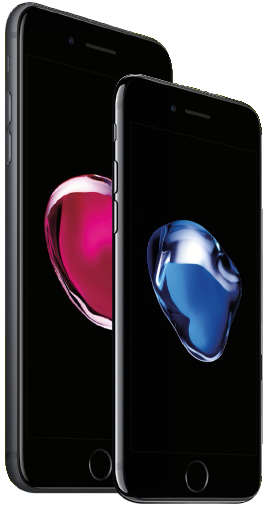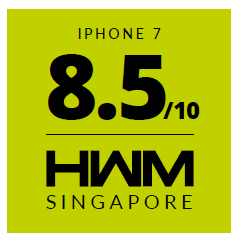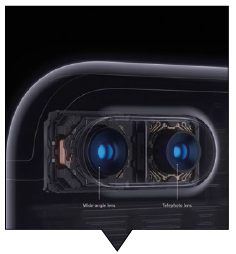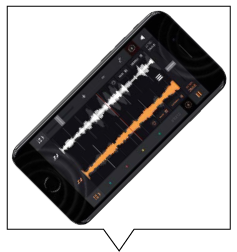Apple iPhone 7 and 7 Plus. By James Lu.


Apple iPhone 7 and 7 Plus. By James Lu.

IPHONE 7 PLUS AT A GLANCE:
OPERATING SYSTEM iOS 10
DISPLAY 5.5-inch 1,920 x 1,080 pixels resolution (401 ppi) LCD
CAMERA Dual 12-megapixel, (f/1.8, 28mm & f/2.8, 56mm) with phase detection autofocus, OIS, and quad LED (dualtone) flash
DIMENSIONS 158.2 x 77.9 x 7.3mm
WEIGHT 188g
IPHONE 7 AT A GLANCE:
OPERATING SYSTEM iOS 10
DISPLAY 4.7-inch 1,335 x 750 pixels resolution (326 ppi) LCD
CAMERA 12-megapixel, f/1.8 with phase detection autofocus, OIS and quad LED (dualtone) flash
DIMENSIONS 138.3 x 67.1 x 7.1mm
WEIGHT 138g

Apple has stuck to the same iPhone design for the past three years now. It’s a clean and simple look, and it still looks great, but it’s not exciting anymore. To illustrate just how similar these phones are, both the 7 and 7 Plus have identical dimensions to their predecessors. Having said that, both the 7 and 7 Plus are now IP67 water resistant, which means you can dunk them in 1m of water for up to 30 minutes. Apart from the dust and water resistance, there are three main visual differences between the 6s and the 7. First of all, the unsightly antenna bands on the back now curl around the edge of the phone, which makes them a bit less of an eyesore. On the Jet Black and Black models, they’re also black to blend into the body, which is a much welcome refinement. Second, the camera bump is now molded into the rear. Instead of the metal ring surrounding the camera module, the back of the case now forms a small curved lip around the camera. And finally, as you already know by now, there’s no 3.5mm headphone port.
For the first time since 2012, the iPhone is now available in black. In fact, there are two blacks: Black and Jet Black. The former is a matte finish that looks like a much darker version of the Space Gray it replaces, and reminds me a lot of the black/slate iPhone 5. Jet Black is Apple’s new finish, and uses a 9-step anodization and polishing process to make the back and sides of the phone just as glossy and slick as its glass display. It’s worth noting that the high-gloss finish and slick feel actually make the Jet Black look and feel a little plasticky, but you have to admire the finishing process Apple has come up with. There’s one other design change that you won’t see, but you will feel as soon as you turn on your new iPhone. The iPhone 7’s home button is no longer an actual button. The button uses the same Taptic Engine as Apple’s newer MacBook trackpads and sends a vibration through the button when you apply pressure to it - it feels like a click, but the button never moves.
On the back of the iPhone 7 is a 12-megapixel, f/1.8 camera on its rear. Apple has brought optical image stabilization to the 7, previously found only on the Plus model, and there’s also a new camera sensor that Apple says is 60 percent faster than before and 30 percent more efficient. The True Tone flash has received an upgrade too, and now uses four LEDs instead of two, resulting in a 50 percent brighter flash. The 7 Plus gets Apple’s first dual-camera setup, which pairs a 12-megapixel f/1.8 wide-angle shooter with a 12-megapixel f/2.8 telephoto camera to give the Plus 2x zoom functionality. Eventually you’ll be able to use this dual-camera setup to take artsy bokeh shots too.
Like they have for the past three years, the smaller iPhone 7 has a 4.7-inch 1,335 x 750 pixels resolution (326 ppi) LCD display, and the larger Plus has a 5.5-inch 1,920 x 1,080 pixels resolution (401 ppi) LCD display. While these resolutions may seem rather low-end compared to the QHD displays offered by competitors, I honestly can’t see any difference in clarity between the 7, 7 Plus and the QHD 5.7-inch display on the Samsung Galaxy Note7.
The iPhone displays now also support the DCI-P3 wide color gamut, which is the standard used in the film industry, and that means the new iPhones are capable of reproducing more colors than the standard sRGB color range. The new displays are also brighter than last year, with a maximum brightness of 625 nits, significantly more than the 500 nits of the 6s.
The iPhone 7 and 7 Plus are the first iPhones to feature stereo speakers. We’ve seen this on a number of Android phones, and considering how most of the content we watch is in landscape orientation, it’s amazing Apple has taken this long to implement stereo sound on the iPhone. The speakers are surprisingly good. They’re much, much louder than before and both treble and bass performance is significantly improved. The stereo separation could perhaps be improved though (it’s better on the 7 Plus than on the 7) but it does the job.
The iPhone 7 and 7 Plus both run on Apple’s new A10 Fusion SoC, a quadcore processor that pairs two high performance cores with two low-power, high efficiency cores. When you’re doing mundane tasks like web browsing or reading your email, these cores will kick in and save you battery life. Graphics performance has also improved thanks to a hexa-core graphics chip that’s 50 percent faster than the A9 found in the iPhone 6s, and three times faster than the A8 in the iPhone 6. As expected, benchmark performance is class-leading and right now, the iPhone 7 is easily the most powerful smartphone on the market. Battery life is also good and, thanks to the removal of the headphone port, both new iPhones have larger batteries than their predecessors. This, in combination with the more power efficient A10 Fusion processor means both iPhones lasted about two hours longer on our battery benchmark.
If you can get over the re-used design (the new Jet Black and Black colors really help with that) and the removal of the headphone port, the iPhone 7 and 7 Plus are easily contenders for the best smartphones on the market. Apple has upgraded nearly everything on the phones: display, processor, storage, speakers, build, camera, and battery. The problem is, none of these things feel like the next big thing.
If you need to buy a new phone right now, the iPhone 7 and 7 Plus are excellent. But if you decide to skip, you won’t actually be missing out on much. Don’t get me wrong, Apple needed to make the iPhone 7. They needed to go back to basics and improve the fundamentals by adding features like water resistance and stereo speakers - features that their rivals have been pushing for years. And now that they’ve done that, Apple is ready to build on that foundation and change everything again. But you’ll have to wait for next year’s iPhone to experience that.

The iPhone 7 now has optical image stabilization.

The new Home Button is solid state and doesn’t move.


The iPhone 7 Plus has a dual camera setup giving it 2x optical zoom capabilities.

Both the 7 and 7 Plus now have stereo speakers.


CONCLUSION
The best iPhones Apple has ever made, but next year’s iPhone could be worth waiting for.























